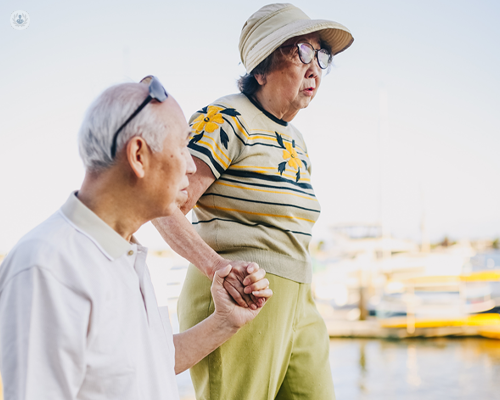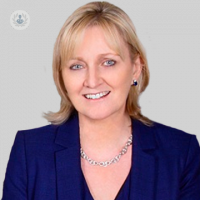Osteoporosis explained: How is the condition treated?
Autore:The most well-known, and most likely debilitating symptom of osteoporosis, is bone fractures. It goes without saying how frustrating and difficult it must be to have any severity of this condition.
Here to provide an in-depth take on osteoporosis and how it's managed through effective medication and lifestyle changes, is leading central London rheumatologist Dr Stephanie Kaye-Barrett.

What is osteoporosis?
Osteoporosis is the thinning of the bones. It's actually a metabolic process which occurs after menopause and when testosterone is declining. It's an important condition that needs to be screened for in people who are at high risk. Otherwise, people can end up with bone fractures.
Who is normally affected by osteoporosis?
Men and women can be affected by osteoporosis. One in three women is affected by osteoporosis, and around one in five men. We also see it in pre-menopausal women, and men; people who have history of intake of steroids, people who've had:
-
Abrupt onset of menopause;
-
Surgical menopause;
-
People who have malabsorption and;
-
Eating disorders.
These patients need to be thought of quite carefully in the screening programmes.
What is happening inside the body when osteoporosis is present? What are the causes?
The causes of osteoporosis are overactivity of the cells called the osteoclasts. The osteoclasts are overactive, so this is the metabolic process that gets switched on in osteoporosis. They're overactive and break down too much bone.
The osteoblasts, are the bone cells that build up new bone and these are less active than they should be, and they don't keep up with the breakdown which is caused by the osteoclasts. The whole process here is a dynamic process of breakdown and build up, which happens anyway, but it's over active in the osteoclasts in terms of breakdown in post menopausal women and people with osteoporosis.
What are the early signs and symptoms of osteoporosis?
Often osteoporosis is completely asymptomatic, which is why we need to think early about screening. Taking family history is very important; did my mother or grandmother have a stoop of their back? Did they have fractures? Even fractures in the elderly, such as a hip fracture, and if it's a fragility fracture due to them falling on the carpet, it still counts as a risk factor for osteoporosis in the offspring of that person. So genetics are very strongly indicative that somebody who's had osteoporosis will have offspring with osteoporosis. That should be a red flag or warning.
Often, people just notice the first time they have a fracture so a fragility fracture of the wrist; 'Oh I fell over, it wasn't a big fall but I fractured my wrist.' Second fractures are in the spine, so people can get a curved spine stooped forward and not even know they've actually had some silent wedge fractures.
It's about looking at the spine and taking a history. Do they have a history of pain? Have they lost height? People lose height and think 'oh, why have I lost height?' - that is one of the things everyone should look at whether they've reduced bone density on a bone density scan; if they've lost height or have a fracture.
What treatment options are available? Is it curable?
Osteoporosis isn't curable, but treatable, and what we aim to do with the medications is to prevent fractures, number one, and improve bone density, number two. We can actually visualise this on repeat bone density scans which, incidentally, are very safe to repeat because it's a low-dose X-ray. You can do it every year if you want to, and every two years recommended, to see what the improvement in bone density is. That's what we use to measure whether patients are, a, taking it, and b, having a good result.
The medications are incredibly powerful and effective. We have oral medications which are bisphosphonates and alendronic acid, which you take once a week on an empty stomach first thing in the morning with tap water. There's a whole group of bisphosphonates you take by mouth, and there's also injectable bisphosphonates which are given by infusion once a year. That means that patient visits and compliance is always excellent because that's controlled by the doctor and the patient, and we know how much has gone into the body.
The third option which is used now, and can be used by GPs is injectable Prolia or denosumab. I use that very widely in my practise, so this is like a flu jab, a subcutaneous injection every six months under the skin, provided that patients have normal vitamin D, calcium and normal renal function tests before they have the injection. It really is virtually painless and it's once every six months.
What lifestyle changes can you recommend for good bone health?
My first go-to about a patient's lifestyle: are they having enough vitamin D? Do they have enough vitamin D? I always measure vitamin D levels, and we find that most of the population now, is deficient. It used to be thought that 50 nmol per litre was perfectly adequate. It isn't, not for osteoporosis and preventing fractures. So we have patients who are above 75 nmol per litre on the blood test. If it isn't there, we replace the vitamin D with quite high dose vitamin D.
Some of the commercial products, which are readily prescribed by GPs, don't have adequate vitamin D. We also talk in depth about diet. Are they dairy avoidant and if so, we might need to add some calcium supplements. In general, it's the vitamin D that's the most important supplement for people. Otherwise, the medications don't work and patients will still carry on getting fragility fractures. These are really important.
Exercise is very, very important. So 30 minutes of brisk walking every day is important. If someone is disabled and they can't walk, doing resistance exercises with a physiotherapist or personal trainer to strengthen the muscles in the spine is important. It's very important to remember that it's all about muscle strengthening as well to support the bones, and stimulate new bone growth.
Walking, for those who are able, is very helpful. It improves the bone density by activating the osteoblasts. It's actually the percussive movement of the feet on the pavement that transmit energy up to the femoral neck; the femur, where the hip is. This can actually stimulate new bone growth. Generally, if someone's got established osteoporosis, this won't work on it's own. It can work in addition to the medications that we give if someone has moderate or severe osteoporosis.
If you're concerned about osteoporosis, or require expert treatment, arrange a consultation with Dr Kaye-Barret via her Top Doctors profile.


